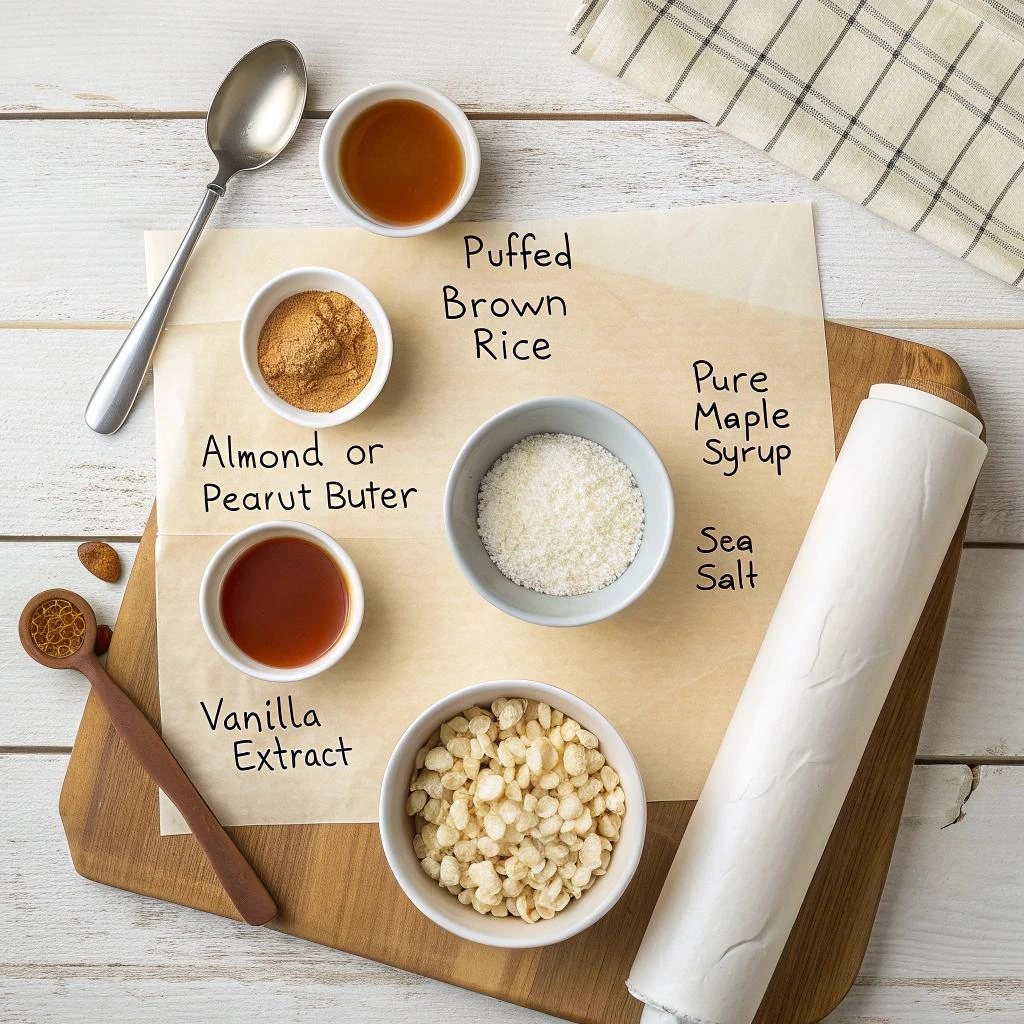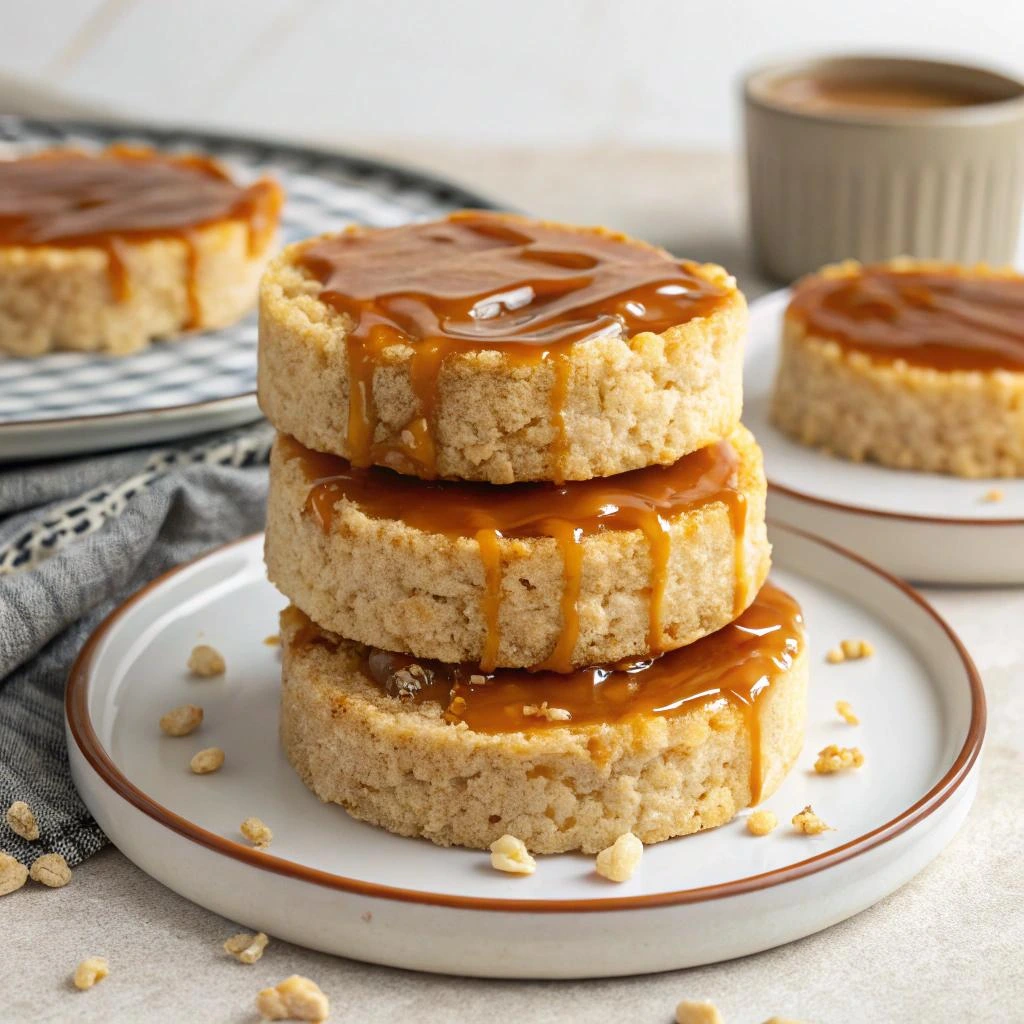Caramel rice cakes are a tempting snack lining grocery store shelves with promises of crunch and sweetness. Popular among dieters and busy individuals alike, these snacks are often marketed as a healthier alternative to chips, cookies, or even traditional desserts. But do these airy, sweet treats live up to their healthy image? Let’s take a closer look at caramel rice cakes—examining their nutritional profile, potential advantages, drawbacks, and even how you can make your own better-for-you version at home.
The Nutritional Breakdown of Caramel Rice Cakes
When it comes to assessing whether caramel rice cakes are a healthy snack, understanding their nutritional content is crucial. These snacks are typically made from puffed rice, bound together and coated with a thin layer of caramel flavoring. Compared to other snack foods, their calorie count is often lower, making them appealing for those watching their energy intake.
- Calories and Carbohydrates: A standard caramel rice cake (about 13 grams) contains approximately 50–60 calories, mostly coming from carbohydrates. There’s very little fat or protein, so they’re not particularly filling on their own.
- Sugar Content: That caramel coating, while tasty, means added sugars. Each rice cake can have around 3–5 grams of sugar, which adds up quickly if you eat more than one.
- Micronutrients: Caramel rice cakes are low in essential vitamins and minerals. Unlike whole grains, the puffing process strips away much of the fiber and nutrition from the rice.
- Gluten-Free and Allergen-Friendly: These snacks are naturally gluten-free, making them suitable for people with Celiac disease or gluten sensitivities. However, always check packaging for cross-contamination warnings.
- Portion Size: Many people find it easy to eat several rice cakes in a sitting, which can double or triple calories and sugar quickly.
In contrast, choosing snacks like nuts or fruit provides a wider array of nutrients—fiber, healthy fats, and antioxidants. While caramel rice cakes are lower in calories, they may not offer lasting nourishment.
Health Benefits and Potential Upsides
Despite some nutritional gaps, caramel rice cakes might still have a place in a well-rounded diet—particularly when consumed in moderation. Here’s why some people reach for these crunchy snacks:
- Calorie Control: For those trying to manage their weight, caramel rice cakes offer a controlled portion size. They can be part of a calorie-conscious snack, especially when compared to sugary cookies or greasy chips.
- Convenience: These snacks require no preparation, are shelf-stable, and are individually packaged for on-the-go eating. This makes them handy for office snacking or travel.
- Versatility: Caramel rice cakes can serve as the base for a number of toppings—think nut butters, Greek yogurt, or sliced fruit, which can help boost both flavor and nutrition.
- Minimal Ingredients: Many brands focus on short ingredient lists with few additives or preservatives, potentially appealing to those avoiding ultra-processed foods.
Examples of healthy ways to use caramel rice cakes include:
- Topping them with almond butter and banana slices for extra fiber.
- Pairing with a boiled egg for more sustained energy.
- Using them as a lighter alternative to cookies or pastries in snack mixes.
Meanwhile, studies from the Centers for Disease Control and Prevention suggest that healthier snacking can play a positive role in overall diet quality when approached mindfully. Caramel rice cakes, especially with added whole food toppings, can be part of that strategy.
Downsides of Caramel Rice Cakes: What to Watch Out For
Caramel rice cakes, while light and sweet, aren’t perfect. Certain characteristics of these snacks can cause concern—especially if consumed in excess or relied on too heavily as a dietary staple.
- High Glycemic Index (GI): Rice cakes are known for their high GI, meaning they convert rapidly into glucose in the bloodstream. This leads to quick energy bursts followed by sugar crashes. High-GI foods may increase the risk for blood sugar spikes, especially problematic for people with diabetes or insulin resistance, as discussed by Harvard Medical School.
- Low Satiety: Due to the minimal fat and fiber, caramel rice cakes aren’t particularly filling. This can lead to overeating, as your body doesn’t feel truly satisfied after eating them.
- Added Sugars: Even modest sugar content adds up, particularly if you consume more than one rice cake at a time. Excess added sugar intake is linked to increased risk of obesity and heart disease, according to the National Institutes of Health.
- Nutrient Deficits: The puffing process and added ingredients strip rice cakes of much of their original nutrition. They provide little in the way of micronutrients, so relying on them frequently may crowd out other, more nutritious foods.
Practical tips to manage these downsides:
- Enjoy caramel rice cakes as an occasional treat, not an everyday staple.
- Combine with protein or healthy fat sources—such as peanut butter or cottage cheese—to feel fuller longer.
- Read nutrition labels carefully for total sugar per serving.
On the other hand, other whole food snacks—like fruit, unsalted nuts, or air-popped popcorn—can be superior choices for those seeking more balanced nutrition with built-in satiety.
Caramel Rice Cakes Recipe: Make It Healthier at Home
If you love caramel rice cakes, why not try making a smarter version at home? Homemade rice cakes allow you to control the ingredients, reduce added sugars, and increase nutritional value.
Ingredients
- 3 cups puffed brown rice (look for unsweetened, whole-grain varieties)
- 1/4 cup pure maple syrup or honey
- 2 tablespoons almond or peanut butter (optional, for richness)
- 1/4 teaspoon sea salt
- 1/2 teaspoon vanilla extract
- Cooking spray or parchment paper

Preparation Method
- Prepare the Sticky Coating
In a small saucepan, combine the maple syrup (or honey), nut butter (if using), sea salt, and vanilla extract. Heat over low-medium, stirring until melted and well-blended. Do not let it boil—just melt enough to combine. - Mix with Rice
In a large bowl, pour the coated mixture over the puffed rice. Use a spatula to gently fold until all the rice is covered. - Shape the Cakes
Line a baking sheet with parchment paper or use a silicone mold. With slightly damp hands, scoop portions of the mixture and press into flat, round shapes similar in size to store-bought rice cakes. Press firmly so they hold their shape. - Let Them Set
Place baking sheet in the fridge for at least 1 hour, or until cakes are firm and set. For extra crunch, bake at 300°F for 10–15 minutes, then cool completely. - Store and Serve
Store homemade caramel rice cakes in an airtight container at room temperature for up to one week.
These DIY caramel rice cakes can be further customized—add chia seeds, cinnamon, or coat with a drizzle of dark chocolate for variety. By making them at home, you reduce added sugars and boost nutrition.
Comparison with Other Snack Alternatives
When deciding if caramel rice cakes should become a regular part of your snack routine, it’s essential to weigh them against other snack options. Not all crunchy snacks are built the same, and some alternatives may deliver greater satiety and nourishment.
- Whole Grain Crackers: Offer more fiber and complex carbs, helping you feel full longer.
- Nuts and Seeds: Healthy fats and plant protein support heart health and provide lasting energy.
- Air-Popped Popcorn: Low-calorie and high in volume, with more fiber than rice cakes.
- Fresh Fruit: Delivers natural sweetness along with fiber, vitamins, and antioxidants.
Meanwhile, processed snacks such as chips and cookies tend to be higher in unhealthy fats, salt, and added sugars—surpassing even caramel rice cakes. However, some “healthier” snack bars and trail mixes can also be calorie-dense due to sweeteners and dried fruit. Always compare nutrition labels for calories, sugar, and fiber per serving.
Practical snack-boosting strategies include:
- Pairing caramel rice cakes with Greek yogurt or cottage cheese for a protein boost.
- Spreading a thin layer of nut butter with a sprinkle of cinnamon to add flavor without too much sugar.
- Using rice cakes as a base for savory toppings, such as hummus and sliced veggies.
Traditionally, rice cakes were considered a diet food, but the modern approach focuses on combining them with nutrient-dense toppings to create a more balanced and satisfying snack.
Conclusion: Are Caramel Rice Cakes a Healthy Snack Choice?
Caramel rice cakes have carved out a niche among snack lovers for good reason. They’re convenient, low in calories, and have a satisfying crunch. However, their simplicity is also their drawback—they offer little protein, fiber, or essential nutrients, and the caramel flavor comes with added sugars.
As a result, while caramel rice cakes can fit into a healthy eating pattern in moderation, they shouldn’t be the backbone of your snacking repertoire. Pairing them with nutritious accompaniments and balancing them with other whole-food snacks delivers the best of both worlds: satisfaction and nutrition. When in doubt, homemade versions can be superior—allowing you to adjust sweetness and add nourishing ingredients. By making thoughtful choices, you can enjoy caramel rice cakes without sacrificing your wellness goals.

